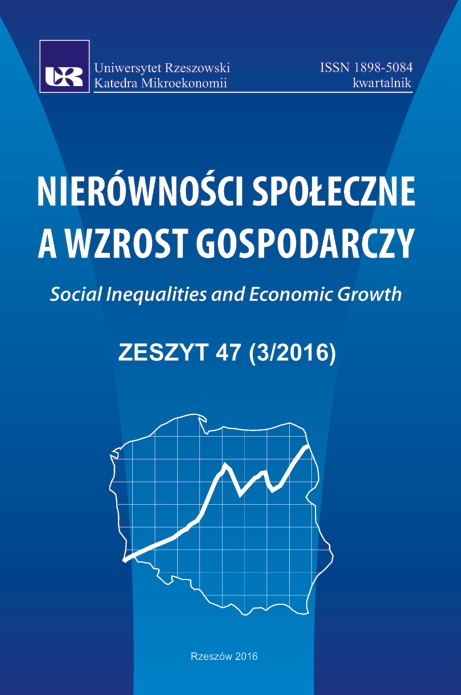Zróżnicowanie rozwojowe Polski w latach 2004–2014 na tle innych państw Unii Europejskiej – wybrane zagadnienia
Polish Differentiation and Development in the Period 2004–2014 Compared to Other European Union Countries – Selected Issues
Author(s): Małgorzata GaszSubject(s): Economy, Supranational / Global Economy, EU-Approach / EU-Accession / EU-Development, Public Finances
Published by: Wydawnictwo Uniwersytetu Rzeszowskiego
Keywords: disparities; the European Union's GDP; public finance; innovations
Summary/Abstract: When initiating the process of political transformation and economic liberalization and regional integration Poland and the European Union have transformed the socio-economic space organization and intensified a number of positive economic processes; their dependence on the state of the Polish economy and events on world markets, which is reflected in the real economy. Using comparative and descriptive analysis this article has evaluated a set of selected economic parameters allowing to refer to the scale and scope of the changes which became beneficial for the Polish economy, as well as recommendations regarding further directions of change. The analysis of the discussed economic values leads to the conclusion that the EU as a single economic entity is still strongly differentiated. The pace and scale of the changes observed in the realm of GDP, labour markets or in the area of public finances is not satisfactory in the context of raising the competitiveness of the European economy on world markets and the differences in the level of economic development of the EU countries cause that the scale and pace of these changes are uneven. Poland is the only country among all the EU countries, which throughout the period of its membership in the EU has not recorded negative GDP. In the period 2008–2013 the total scale of GDP growth was 20%, which is the best result in Europe. Among the most important factors for maintaining a relatively high rate of economic growth one should mention in particular the funds transferred to Poland under the EU funds, foreign direct investment and private remittances.
Journal: Nierówności Społeczne a Wzrost Gospodarczy
- Issue Year: 2016
- Issue No: 47
- Page Range: 415-426
- Page Count: 12
- Language: Polish

